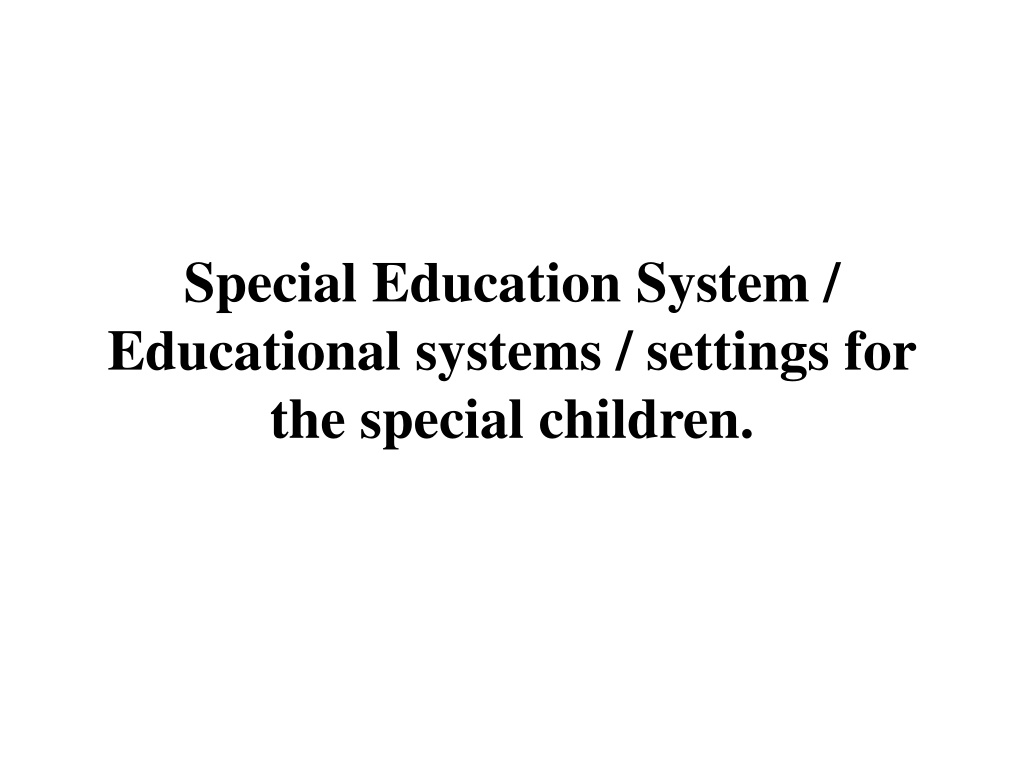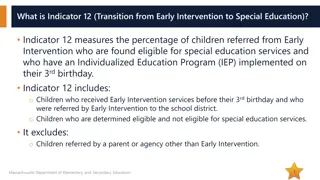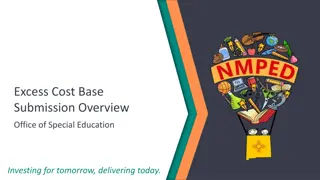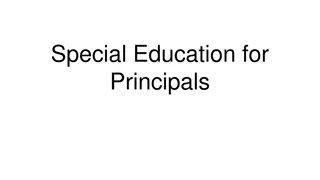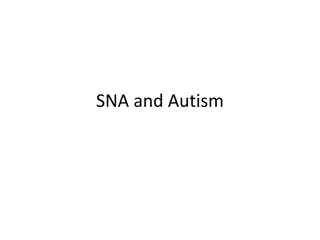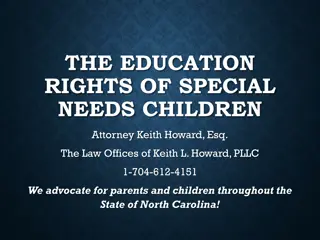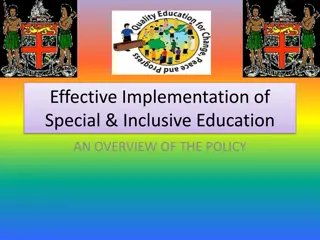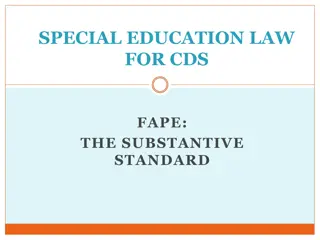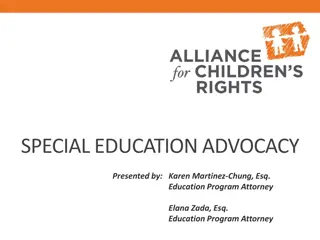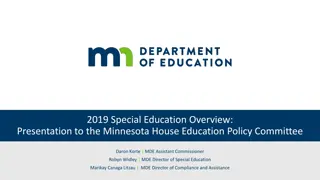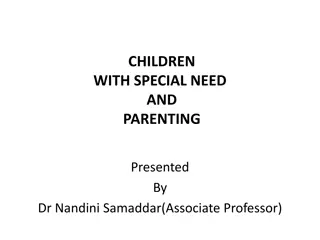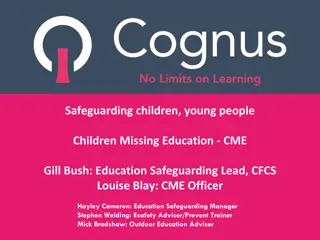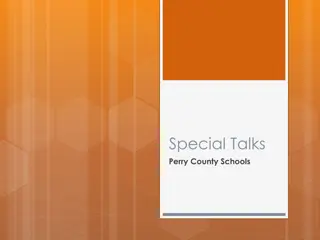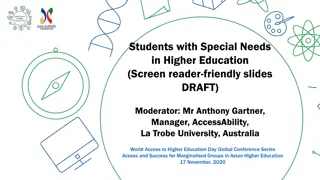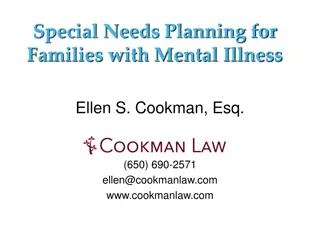Understanding Special Education Systems for Children with Diverse Needs
Special education programs cater to students with various challenges by adapting content, teaching methods, and infrastructure to meet individual needs. Inclusive education emphasizes educating children with disabilities alongside their peers without segregating them in separate settings. It focuses on quality learning and changing the education system to accommodate diverse learners effectively.
Download Presentation

Please find below an Image/Link to download the presentation.
The content on the website is provided AS IS for your information and personal use only. It may not be sold, licensed, or shared on other websites without obtaining consent from the author. Download presentation by click this link. If you encounter any issues during the download, it is possible that the publisher has removed the file from their server.
E N D
Presentation Transcript
Special Education System / Educational systems / settings for the special children.
Introduction: Special Education programs are designed for those students who are mentally, physically, socially and/or emotionally disturb. Special Education programs and services adapt content, teaching methodology and delivery instruction to meet the appropriate needs of each child.
SPECIAL EDUCATION: For special education, some special infrastructure is needed. Special education requires following three main elements: Trained professionals educationists, physiotherapists etc. Special curriculum made for students with different disabilities. Infrastructure facilities like building features, study places, material and equipment's etc. including teachers,
Special Education System: Inclusive Integration Segregation (Special Schools) Mainstreaming Exclusive
Inclusive Education Inclusion is the educational practice of educating children with disabilities in classrooms with disabilities. children without Cont
Cont.. This system rejects the use of special schools or classrooms to separate disabilities from students without disabilities. Inclusive education is about how we develop and design our schools, classrooms, programs and activities so that all students learn and participate together. Inclusive education means that all students attend and are welcomed by the schools. Cont students with
Cont Inclusive education is about disabled children learning effectively once they are in general schools (i.e. the focus is on quality of learning). In inclusive education the system is expected to change, not the child. It recognizes that all children are different, and that the school and the education system need to change in order to meet the individual needs of all learners with and without impairments.
Integration Integrated education is about disabled children going to general schools. (i.e. the focus is on attendance rates). In integrated education the child s problems is seen as the problem of the child not of the teachers or system. For example, a deaf child may wear a hearing-aid and be expected to learn to talk in order to fit in. But the teachers and other children are not expected to learn sign language, or other forms of communication. A child with learning difficulties is expected to pass standardized tests in order to progress through school, otherwise s/he will repeat the class, or be forced to drop out.
Cont Special person are being placed in mainstream education settings with some adaptations and resources, but on condition that they should fit their self with pre-existing structures, attitudes and an unaltered environment. For example: The child is required to "fit in" to what already exists in the school. Cont
Segregation Their should be separate institutions for the special and normal children. Disabled people of all ages and/or those learners with 'Special Educational Needs' labels being placed in any form of segregated education setting. This tends to force disabled people to lead a separate life. For example: Separate special school, college or separate unit within school/college or on separate segregated courses within mainstream education settings.
Mainstreaming: MAINSTREAMING: refers to practice of educating students special needs in class with non-disabled students during specific time period based on their skills. Mainstreaming refers to placing special-needs children in the least environment, in the regular classroom. restrictive educational Cont
Cont A child with learning challenges in reading, for example, could be put in a special class for reading, but for the rest of the school day, the least restrictive environment might be the regular classroom. Similarly, if a child had reading and math challenges, he or she could still be placed with regular-education children for physical education, art, music, social studies, and science.
Cont Mainstreaming does not involve putting a child full-time in a special school. Mainstreaming does not involve placing a child full-time in a regular classroom. In short, mainstreaming refers to putting students who qualify for special education into the regular education class for certain work. Sometimes the mainstreaming only includes music, library, science, social studies and other such classes. Cont
Exclusive Excluding or not admitting other things. Restricted to the person, group, or area concerned. Exclusive means with limited access. Cont
Exclusive Edu: It is opposite of inclusion. Such type of children are excluded from the schools. They study at home or in informal ways.
Inclusive To include the special education with normal children. Special children spent at least half or more than half with non-disabled students. Special classes, separate schools, and removing disabled children from the regular educational environment can occur only if the nature of the disability is such that a regular education class with the use of supplementary aids and services cannot be achieved satisfactorily.
Inclusion is the full acceptance of all students and leads to a sense of belonging within the classroom community. Inclusion ensure educational equity and participation by all.
According to the concept of inclusion, special education students should attend their home school with their age and grade peers, all day, in the regular education classroom rather than being pulled out of regular classrooms to receive special services. This is in accordance with the regular education initiative (REI), a position held by some special educators that students with disabilities should be served exclusively in regular education classrooms and should not be pulledout to attend special classes. The inclusion system posits that support services should be brought to the child and presumes that the child will benefit from being in that class. Full inclusion connotes full-day placement for all students, regardless of handicapping condition.
Inclusion is an effort to make sure students with disabilities go to school along with their friends and neighbors while also receiving whatever, specially designed instruction and support they need to achieve high standards and succeed as learners. Inclusion is not the same as mainstreaming or integration. Mainstreaming attempts to move students from special education classrooms to regular education classrooms only in situations where they are able to keep up with their typically developing peers without specially designed instruction or support. Integration provides only part-time inclusion, which prevents the students from becoming full members of the classroom community.
The National Center on Educational Restructuring and Inclusion developed the following working definition of inclusive education: Providing to all students, including those with significant disabilities, equitable opportunities to receive effective educational services, with the needed supplementary aids and support services, in age appropriate neighborhood schools, in order to prepare students for productive lives as full members of society. classrooms in their
All students, irrespective of their disability, should be educated in mainstream schools. That's what inclusive education means. All children, including those with disabilities and other special needs, are entitled to equity of educational opportunity.
Inclusive education is a process of increasing the participation of all students in schools, including those with disabilities Special education evolved as a separate system of education for disabled mainstream , based on the assumption that disabled children had needs which could not be addressed within mainstream schools. Special education exists all over the world in the form of day, or boarding, schools, and small units attached to mainstream schools. children outside the
In general, educational provision for children with special needs is made: In special schools; (Segregated education) In special classes attached to ordinary schools; in mainstream classes. In integrated settings Inclusive schools http://www.education.ie/en/The-Education-System/Special- Education/#sthash.DsI3wTb7.dpuf
